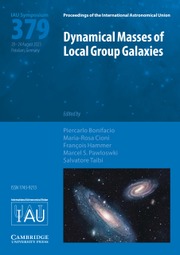Crossref Citations
This article has been cited by the following publications. This list is generated based on data provided by Crossref.
Kotlarz, Jan
and
Zalewska, Natalia
2019.
The Possibility of Ultraviolet Enceladus’ Observations from Stratospheric Balloons.
Transactions on Aerospace Research,
Vol. 2019,
Issue. 1,
p.
17.

